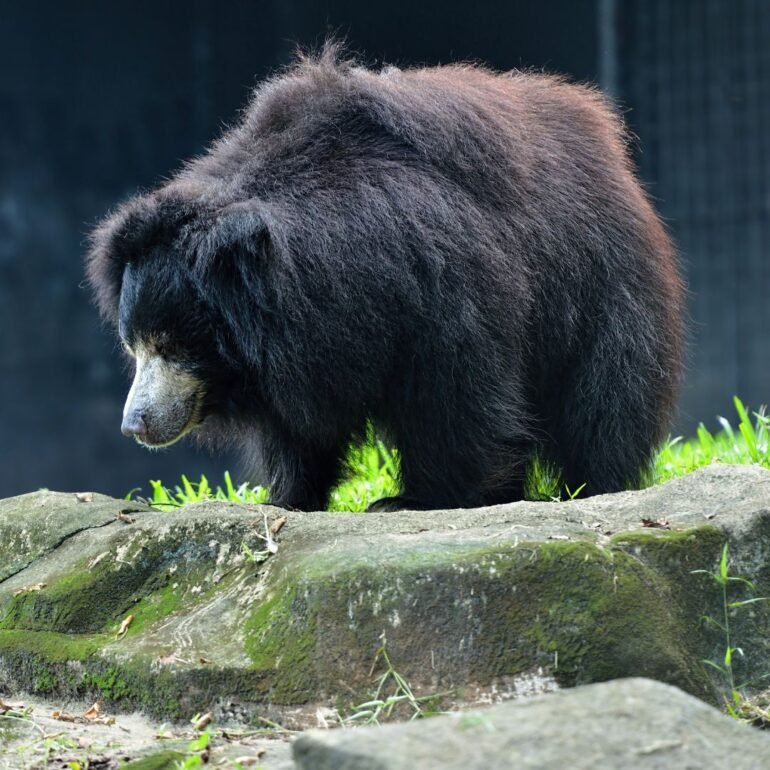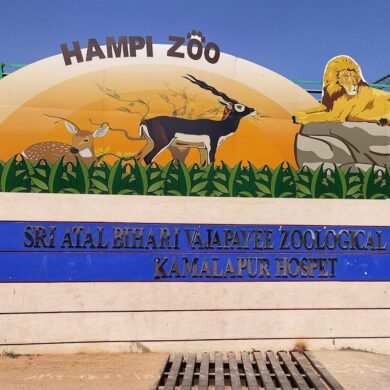In Koppal, Vijayanagar, and Ballari districts, there has been an increase in attacks by sloth bears and leopards on humans, livestock, and crops. Last month, two people were killed by sloth bears in Koppal, and leopards have been frequently preying on cattle across these districts.
Farmers, now fearful of entering their fields due to the frequent presence of these wild animals, often avoid their crops for several days, leading to additional crop damage. Experts suggest that drought may be a significant factor in the recent surge of wild animal attacks on humans this year.
“Sloth bears have been destroying drip irrigation pipelines for water and often take shelter in banana and papaya plantations. This leads to attacks when farmers come to harvest or water their crops,” explains Ramalinga Bantu, a papaya farmer near Godekote village in Ballari’s Kudligi taluk.
Experts attribute this spike in human-wildlife conflict to drought, habitat degradation from unregulated stone quarries and m-sand manufacturing units, food and water shortages in protected areas, forest encroachment, and insufficient forest department staffing.
Wildlife expert Samad Kottur points to stone quarrying as a major cause of the increased conflict. “The rocky hills have natural caves where animals have coexisted with humans for ages. However, illegal stone quarrying and sand mining are forcing animals to venture out,” he says.
The introduction of borewells has exacerbated the issue, with more farmers growing commercial and horticultural crops, drawing sloth bears to travel up to 30 km for food and water.
Residents highlight that sloth bear attacks, while causing more injuries than deaths, are a significant concern. The region, known for fruit cultivation, faces considerable crop losses of watermelon, banana, pomegranate, musk melon, papaya, jowar, and sunflower.
Gundappa Kunkadi, a Chilakamukhi resident in Koppal district who survived a sloth bear attack, says it has become very difficult to go out after sunset or before sunrise. The village has seen three deaths and numerous injuries from bear attacks in the past five years. ‘Karadigudda’, a nearby hillock, is home to eight adult sloth bears, with previously barren lands now converted to mango orchards and watermelon fields.
There are calls to designate ‘Karadigudda’ as the state’s third sloth bear sanctuary, but a shortage of forest department personnel has stalled these efforts. Koppal, with seven taluks, has only three range forest officials (out of seven sanctioned posts), one assistant conservator of forests (out of three sanctioned posts), and one deputy conservator of forests.
A decline in fruit-bearing native plants and prey within protected areas is driving animals to raid crops and prey on cattle in human areas. “Crop raids and cattle lifting are concerning as animals venture into human habitats for easy food,” says Arsalan, DCF, Vijayanagara, though he denies extensive illegal quarrying in eco-sensitive zones of Daroji and Gudekote sanctuaries.
Experts and forest officials note that hillocks with natural caves have served as ‘maternity wards’ for sloth bears, leopards, wolves, hyenas, and foxes. Unregulated mining in these areas is forcing animals to leave their safe havens in search of new habitats. “Wild animals are not the menace; we have failed to protect their ‘maternity wards.’ These lands were safe cradles for them, now destroyed,” says Koppal DCF Chandranna.



